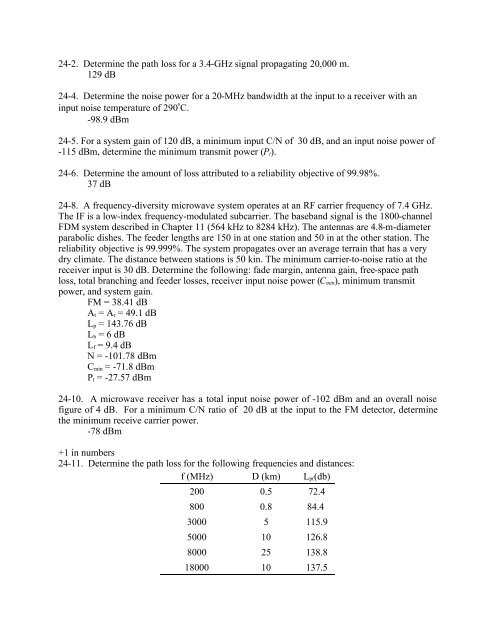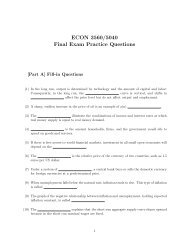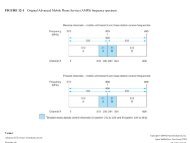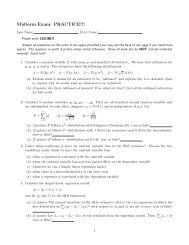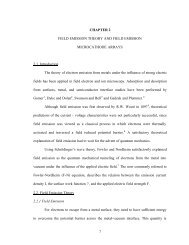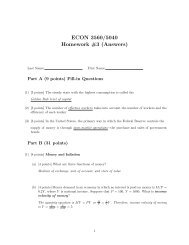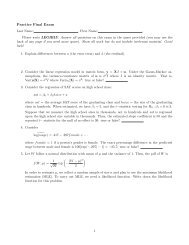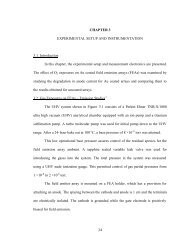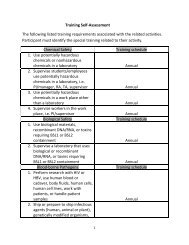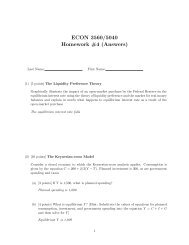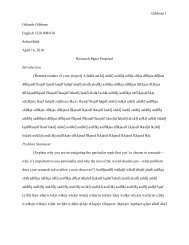24-2. Determine the path loss for a 3.4-GHz signal propagating ...
24-2. Determine the path loss for a 3.4-GHz signal propagating ...
24-2. Determine the path loss for a 3.4-GHz signal propagating ...
- No tags were found...
You also want an ePaper? Increase the reach of your titles
YUMPU automatically turns print PDFs into web optimized ePapers that Google loves.
<strong>24</strong>-<strong>2.</strong> <strong>Determine</strong> <strong>the</strong> <strong>path</strong> <strong>loss</strong> <strong>for</strong> a <strong>3.4</strong>-<strong>GHz</strong> <strong>signal</strong> <strong>propagating</strong> 20,000 m.129 dB<strong>24</strong>-4. <strong>Determine</strong> <strong>the</strong> noise power <strong>for</strong> a 20-MHz bandwidth at <strong>the</strong> input to a receiver with aninput noise temperature of 290˚C.-98.9 dBm<strong>24</strong>-5. For a system gain of 120 dB, a minimum input C/N of 30 dB, and an input noise power of-115 dBm, determine <strong>the</strong> minimum transmit power (P t ).<strong>24</strong>-6. <strong>Determine</strong> <strong>the</strong> amount of <strong>loss</strong> attributed to a reliability objective of 99.98%.37 dB<strong>24</strong>-8. A frequency-diversity microwave system operates at an RF carrier frequency of 7.4 <strong>GHz</strong>.The IF is a low-index frequency-modulated subcarrier. The baseband <strong>signal</strong> is <strong>the</strong> 1800-channelFDM system described in Chapter 11 (564 kHz to 8284 kHz). The antennas are 4.8-m-diameterparabolic dishes. The feeder lengths are 150 in at one station and 50 in at <strong>the</strong> o<strong>the</strong>r station. Thereliability objective is 99.999%. The system propagates over an average terrain that has a verydry climate. The distance between stations is 50 kin. The minimum carrier-to-noise ratio at <strong>the</strong>receiver input is 30 dB. <strong>Determine</strong> <strong>the</strong> following: fade margin, antenna gain, free-space <strong>path</strong><strong>loss</strong>, total branching and feeder <strong>loss</strong>es, receiver input noise power (C min ), minimum transmitpower, and system gain.FM = 38.41 dBA t = A r = 49.1 dBL p = 143.76 dBL b = 6 dBL f = 9.4 dBN = -101.78 dBmC min = -71.8 dBmP t = -27.57 dBm<strong>24</strong>-10. A microwave receiver has a total input noise power of -102 dBm and an overall noisefigure of 4 dB. For a minimum C/N ratio of 20 dB at <strong>the</strong> input to <strong>the</strong> FM detector, determine<strong>the</strong> minimum receive carrier power.-78 dBm+1 in numbers<strong>24</strong>-11. <strong>Determine</strong> <strong>the</strong> <strong>path</strong> <strong>loss</strong> <strong>for</strong> <strong>the</strong> following frequencies and distances:f (MHz) D (km) L p( (db)200 0.5 7<strong>2.</strong>4800 0.8 84.43000 5 115.95000 10 126.88000 25 138.818000 10 137.5
<strong>24</strong>-13. <strong>Determine</strong> <strong>the</strong> noise power <strong>for</strong> a 40-MHz bandwidth at <strong>the</strong> input to a receiver with aninput temperature T = 400˚C.-94.3 dBm<strong>24</strong>-14. For a system gain of 114 dB, a minimum input C/N = 34 dB, and an input noise power of- I I I dBm, determine <strong>the</strong> minimum transmit power (P t ), -94.3 dBm<strong>24</strong>-15. <strong>Determine</strong> <strong>the</strong> amount of <strong>loss</strong> contributed to a reliability objective- of 99.9995%.53 dB<strong>24</strong>-17. A frequency-diversity microwave system operates at an RF = 7.4 <strong>GHz</strong>. The IF is a lowindexfrequency-modulated subcarrier. The baseband <strong>signal</strong> is a single mastergroup, FDMsystem. The antennas are <strong>2.</strong>4-m parabolic dishes. The feeder lengths are 120 m at one stationand 80 m at <strong>the</strong> o<strong>the</strong>r station. The reliability objective is 99 995%. The system propagates overan average terrain that has a very dry climate. The distance between stations is 40 kin. Theminimum carrier-to-noise ratio at <strong>the</strong> receiver input is 28 dB. <strong>Determine</strong> <strong>the</strong> following: fademargin, antenna gain, free-space <strong>path</strong> <strong>loss</strong>, total branching and feeder <strong>loss</strong>es, receiver inputpower (C min ), minimum transmit power, and system gain.FM = 31.6 dB, A t = A r = 43.1 dB,L p = 141.8 dB, L b = 6 dB,L f = 9.4 dB, N = -106 dBm,C min = -78 dBm, P t = 21.6 dBm<strong>24</strong>-19. A microwave receiver has a total input noise power of - 108 dBm and an overall noisefigure of 5 dB. For a minimum C/N ratio of 18 dB at <strong>the</strong> input to <strong>the</strong> FM detector, determine <strong>the</strong>minimum receive carrier power.-81 dBm


